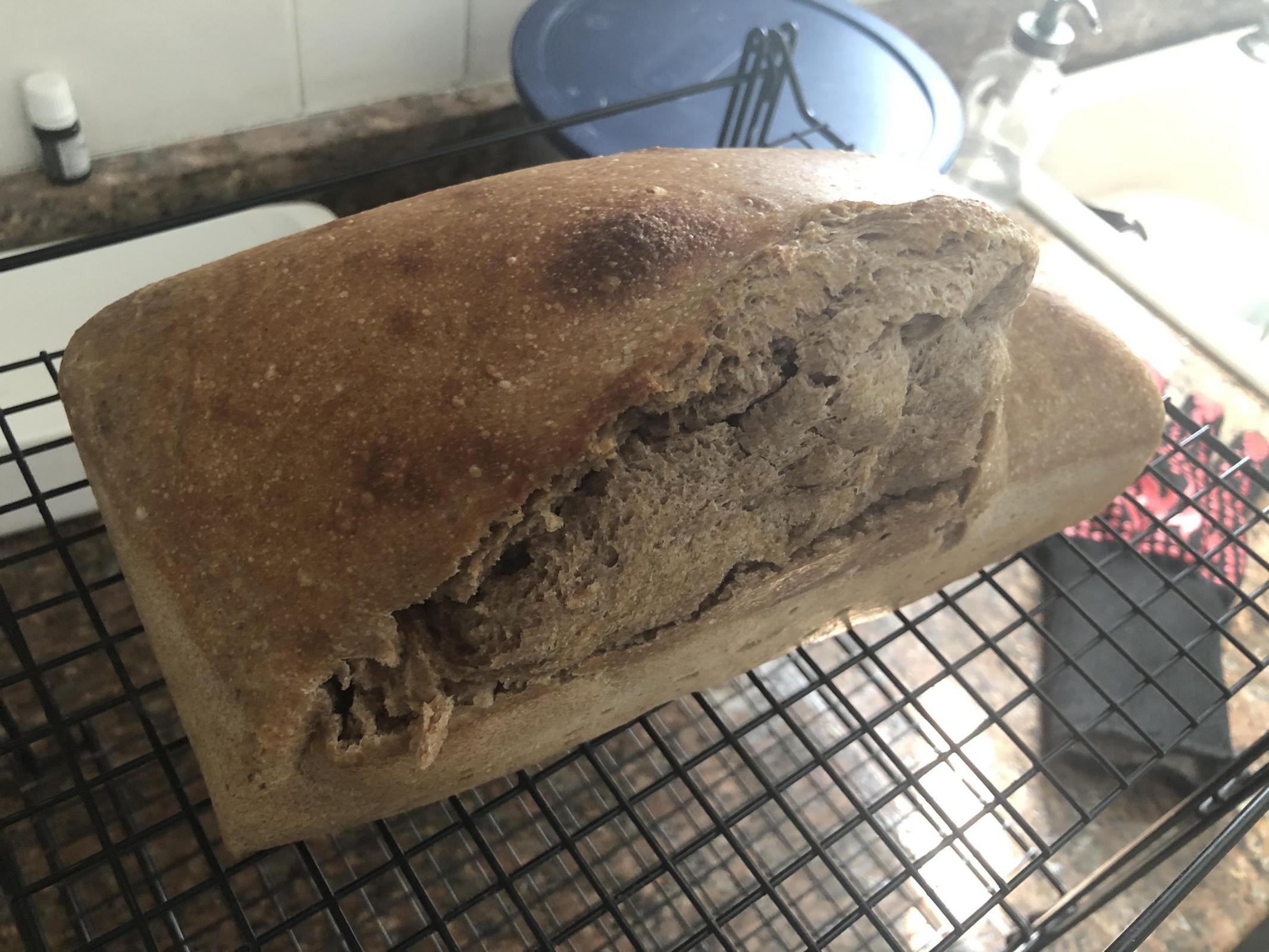
Sandwich loaf fails
I've been baking sourdough for about four years now and can easily throw off a fine batard or boule. But recently I've begun attempting sandwich loafs and I keep failing pretty unpleasantly at it.
See photos. The biggest problems: It splits, and it rises unevenly. So I get the big wart on the top, plus the little butt-ends that look like biscotti. What am I doing wrong?
Recipe:
589g flour (294.5 APF + 294.5 stone-ground whole wheat)
450g - 475g water (it varies)
80g starter
2tsp salt
Autolyse for about an hour or so; add starter; stretch and fold for five or six hours depending on fermentation rate; shape into a log; plop into loaf tin. Sometimes I let it rise 8hrs in the fridge; sometimes 2hr on the countertop. Preheat oven 500º; throw in loaf pan, drop temp to 375º, bake 38 minutes.
HELP.




Perhaps you have already tried this? I often score sandwich bread, though it depends on hydration. Though for what it's worth, my sandwich loaves have mostly been yeast breads. Still, the philosophy is the same, tell it where you want it to go. A straight line down the center of the loaf works for us. I suspect there are more decorative versions out there on you tube.
Good luck!!
I am not opposed to giving that a shot, but—call it a neurotic tic—I'm kind of interested in trying to produce a classic-looking loaf with no score.
Brick Layer,
My best guess. It looks like the crust is hardening prematurely and not allowing the crumb to inflate without rupturing the outer skin.
What do you think?
Allow it to proof for longer if you don't wish to score. That crazy out of control oven spring might also be down to a bit of under proofing. One scores a dough to control the oven spring however if you proof to a point where it won't burst the seams if not scored then you won't have to. Though it's a fine line between perfectly proofed and over proofed. A bit of trial and error needed I would think.
I think both of your responses are probably about what I'm looking for.
I've been cooking my loaves thus far in Dutch ovens, which takes care of the crust-hardening question. Since this is an exposed bake in the loaf tin, I imagine the crust is hardening too quickly. What are some suggestions for preventing that?
As for the proofing, I was given the same response on another forum. So I think I'll need to try that as well. Thank you!
You can include some steam in the initial part of the bake. You can also brush water on the top crust or even an egg wash, I’ve had luck with all of these strategies.
Benny
I've had good results putting the loaf into the cold oven and adding a few minutes to the bake.
I bake almost 100 percent in bread tins except pizza. For the final proof I cover with plastic wrap and test (finger poke) to tell where proofing is. I then use a lot of misting with a hand spray bottle just before I go into the oven, To do the misting I place the loafs into an empty sink and mist two at a time. I often bake four loafs at a time rotating them half way through and test for done with an instant read thermometer.